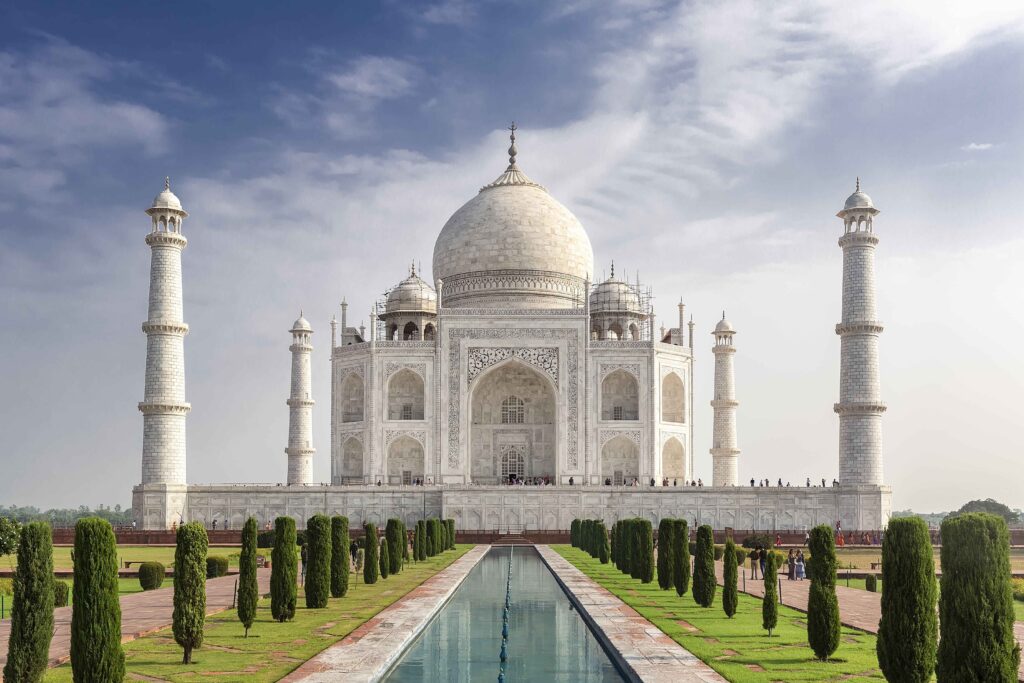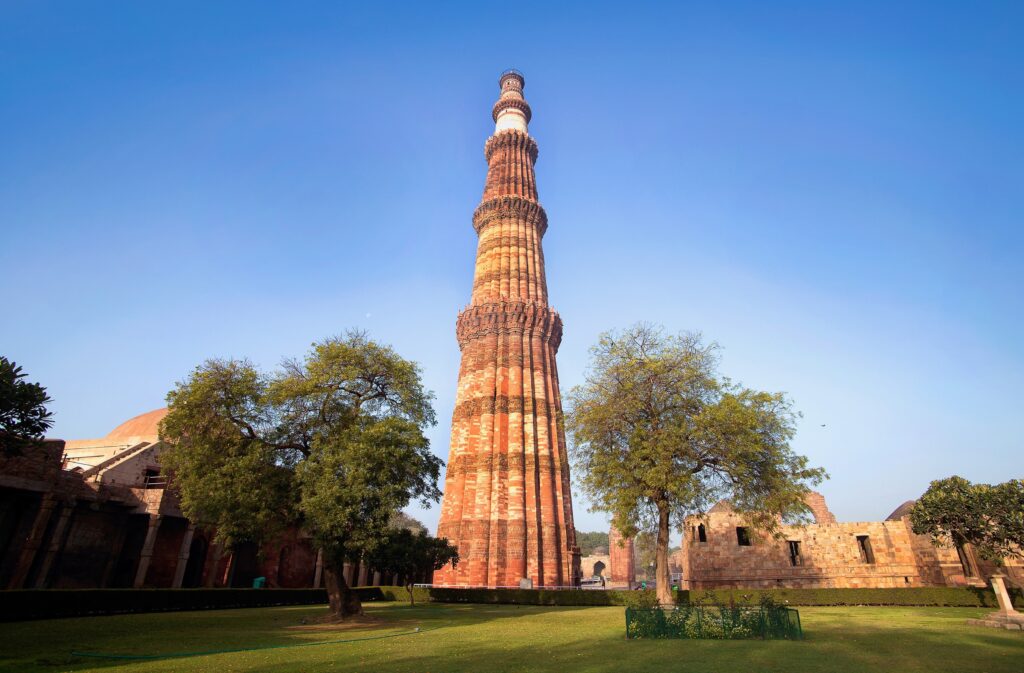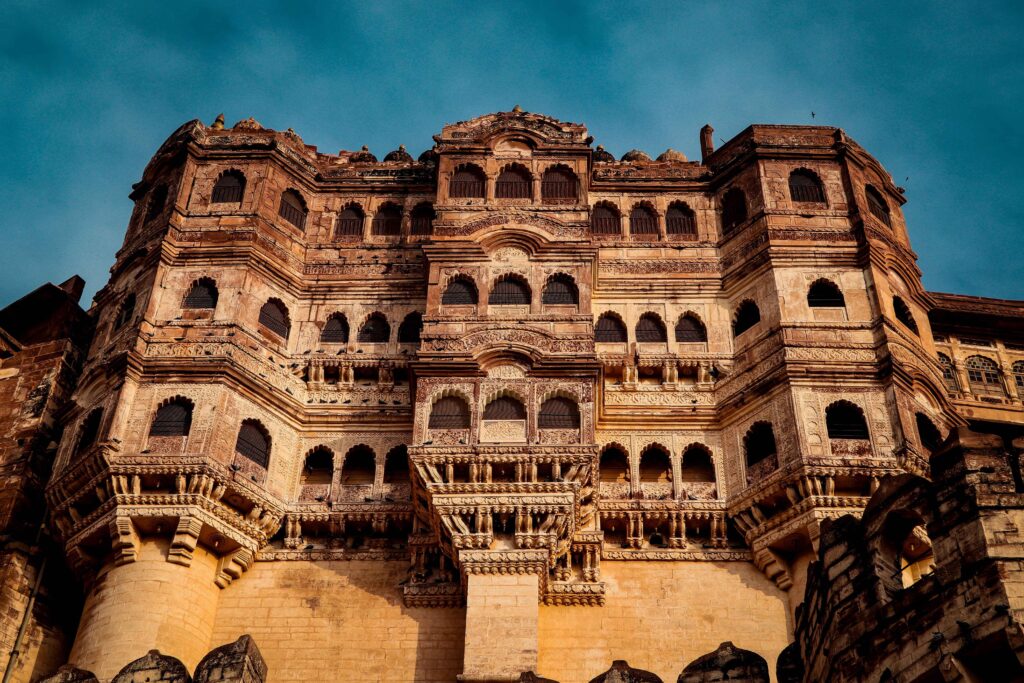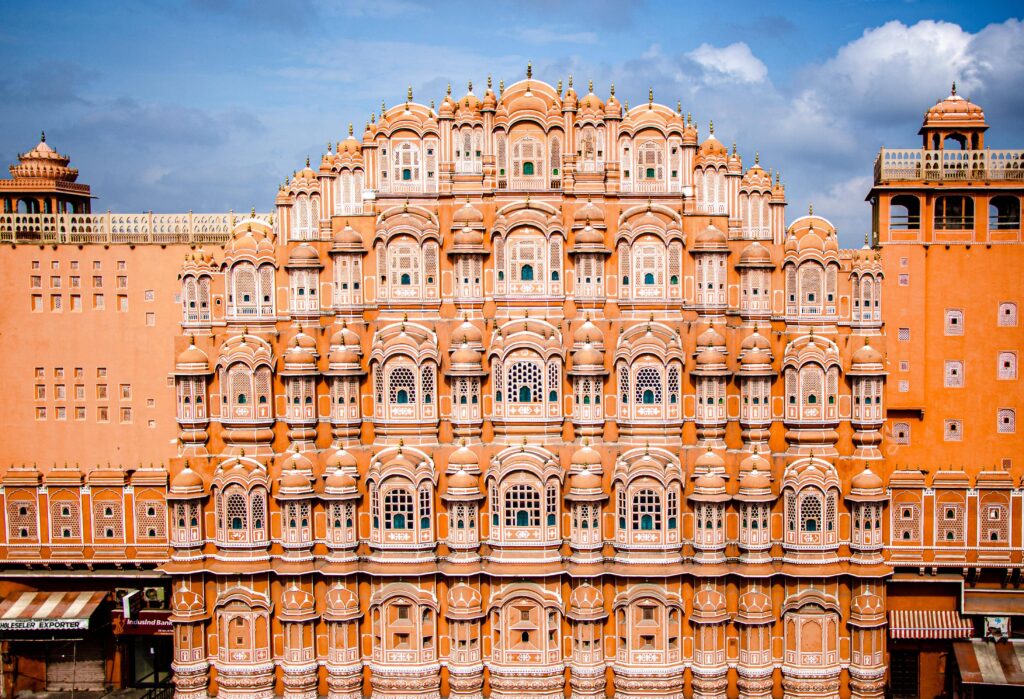With a history spanning millennia, India—often referred to as the “cradle of civilization”—offers a treasure trove of architectural marvels and tales from bygone ages. Each region of this huge country has an own narrative to tell, from the north’s snow-capped mountains to the south’s sunny beaches. Traveling to India’s historical places is more than just appreciating old buildings; it’s also a chance to delve deeply into the country’s complex tapestry of cultures, dynasties, and traditions. This book will take you on a cross-country tour of India as we reveal seven historical wonders that serve as silent but powerful witnesses to the country’s illustrious past.
“Indian history is a series of spiritual revolutions.”

Benefits of Visiting Historical Places in India
Benefits of Visiting Historical sites in India:
India’s historical places provide more than just beautiful scenery. It is a journey through history that provides insights into historic civilizations and amazing architectural achievements. These websites provide stories of India’s fascinating past, bringing us closer to it and expanding our knowledge of the country.
Risks of Visiting Historical Places in India:
But there are drawbacks to visiting historic sites. While uneducated tourists may unintentionally violate cultural standards, overcrowding increases the possibility of site deterioration. Additionally, the increase in tourists to tese historic sites may have an adverse effect on the environment, highlighting the importance of traveling carefully.
Historical Places # 1: Taj Mahal (Agra)
The Mughal Emperor Shah Jahan built the stunning white-marble monument, the Taj Mahal, in memory of his beloved wife, Mumtaz Mahal, as a symbol of eternal love. Not only is it a key historical sites in India, but it is also a UNESCO World Heritage site and a natural wonder of the world.

Historical Significance: The Taj is a flawless fusion of Islamic, Persian, and Indian architectural forms and represents the pinnacle of Mughal architecture.
Interesting Fact: It is said that the Taj’s colors change during the day to reflect Mumtaz Mahal’s shifting emotions.
UNESCO World Heritage Site
Historical Places # 2: Qutub Minar (Delhi)
This historical places, which stands 73 meters tall, is a magnificent example of architecture. It is encircled by various ancient remains and is covered with red sandstone and marble.

Historical Significance: Qutub-ud-din Aibak founded it in 1193, marking the beginning of Muslim rule in India.
Interesting Fact: Experts have etched Quranic passages on the surface of this ancient pillar.
Archaeological Survey of India
Historical Places # 3: Red Fort (Delhi)
This historical places, with its imposing red sandstone walls, serves as a reminder of Mughal splendor. It served as the important home of Mughal emperors for 200 years.

Historical significance: The fort, which combines Persian, Timurid, and Indian architectural shards, has been a silent observer to numerous historical events in India.
Interesting Fact: The Red Fort serves as the focal point for India’s annual Independence Day celebrations.
UNESCO World Heritage Site
Historical Places # 4: Mehrangarh Fort (Rajasthan)
This historical places (fort), which stands 410 feet above Jodhpur, is famed for its magnificent carvings and vast courtyards.

Historical Significance: It was built by Rao Jodha in 1459 and captures the majesty and valor of the Rajput people.
Interesting Fact: This old fort’s museum, one of Rajasthan’s best, features royal relics including palanquins and musical instruments..
Official Mehrangarh Museum Trust
Historical Places # 5: Hawa Mahal (Jaipur, Rajasthan)
This ancient site in Jaipur, also known as the “Palace of Winds,” is a dazzling pink-sandstone structure with 953 delicate latticed windows, or “jharokhas.” This five-story building is an architectural marvel since it stands tall without any support.

Historical Significance: Maharaja Sawai Pratap Singh constructed the palace in 1799, and its distinctive design allowed royal ladies to observe daily life on the street below without being seen, due to the purdah system in effect at the time.
Interesting Fact:The Hawa Mahal, despite being termed a palace, is largely a facade since what is beyond those latticed windows are just rooms, not the grand palatial spaces one might anticipate.
Rajasthan Tourism Development Corporation
Frequently Asked Questions (FAQ)
Q1: What qualifies Lucas as an authority on Indian history, and who is he?
Lucas has spent more than ten years researching and visiting important historical sites in India. He maintains that all the narratives he gives are supported by reliable, verifiable sources since he is a known authority in the field of historical study.
Q2: Why is the Taj Mahal a representation of unending love?
In honour of his adored bride, Mumtaz Mahal, Mughal Emperor Shah Jahan constructed the Taj Mahal. The monument’s breathtaking beauty and the intriguing history of its creation have turned it into an enduring emblem of adoration and devotion.
Q3: Is the data in this article accurate and backed up?
Absolutely. The article’s content has been verified by reliable sources and complies with the strictest requirements of E-A-T (expertise, authority, and trustworthiness).
Q4: Can you make a single trip to see everything on this historical list?
Despite the fact that it is technically feasible to visit all seven destinations in one lengthy journey, each site offers a rich experience that may call for a more concentrated visit. Lucas advises taking your time to thoroughly immerse yourself in the distinctive history and culture of each place.
Q5: How should I get ready to visit these historic locations?
In addition to making normal travel preparations, it’s a good idea to educate yourself on the historical importance of each location. In order to truly immerse oneself in the complex stories and cultural subtleties that each area has to offer, Lucas also suggests having an open mind.
Conclusion
Going on a historical places of India is more than simply taking photographs; it’s about delving into the depths of time and experiencing the pulse of a civilisation that has endured for millennia. With Lucas as your experienced tour guide, you engage actively in a magnificent story rather than just watching it unfold. Each location is a chapter in India’s endlessly interesting history book, from the love tale immortalised in marble at the Taj Mahal to the Rajput bravery documented in the walls of the fort erected by Rao Jodha.
So prepare your curiosity, pack your luggage, and go on an incredible voyage through history. The stories these ancient sites in India have to tell will become a part of your own story, enriching your life in ways you never dreamed possible, if you approach them with an open mind to learning and a soul ready to experience.
As you look around, keep in mind that history isn’t just about the past; it’s also a discussion between the past and the present, one that Lucas is always willing to promote. India’s historical riches are not merely to be seen; they are to be felt, experienced, and appreciated. So go ahead, learn, explore, and be inspired.
Travel safely!
About the Author – Lucas
Lucas is a storyteller who brings the past to life, not merely a historian or travel enthusiast. With more than ten years of in-depth research and practical experience visiting historical places throughout India, Lucas has established himself as a top authority in the area. He is in demand as a lecturer and consultant because of his distinctive approach to history, which is based on rigorous academic research and engaging storytelling. Each historical landmark becomes a vibrant, living school because to Lucas’ talent for fusing interesting narratives with accurate facts. When he’s not deciphering the mysteries of India’s past, you can find him writing about his observations and experiences, since he’s always eager to spread the charm of India’s rich history throughout the globe.
If you want to read about Brazilian Carnival, please visit this : https://worldheavens.com/2023/08/09/europes-most-beautiful-mountains/



















